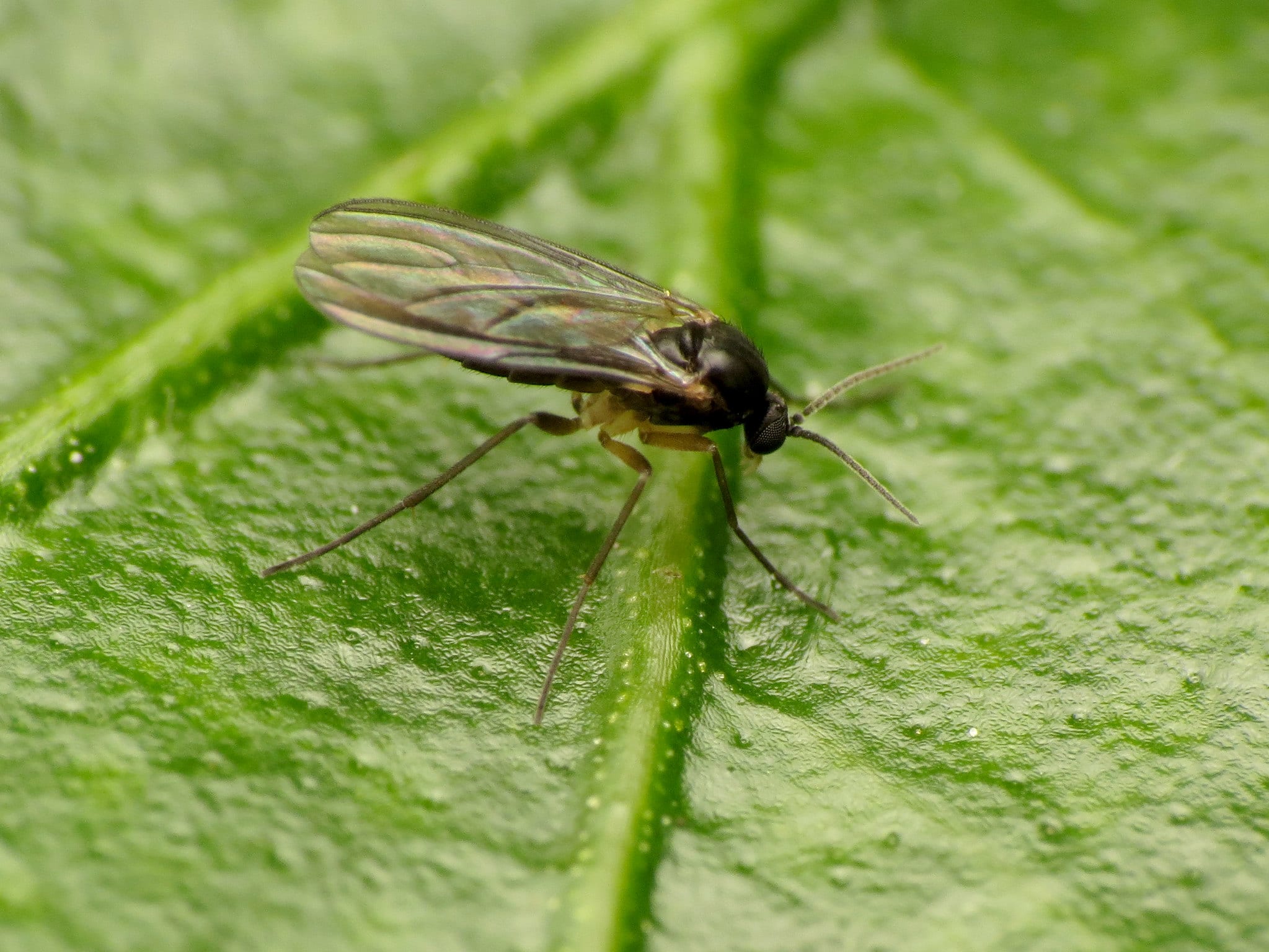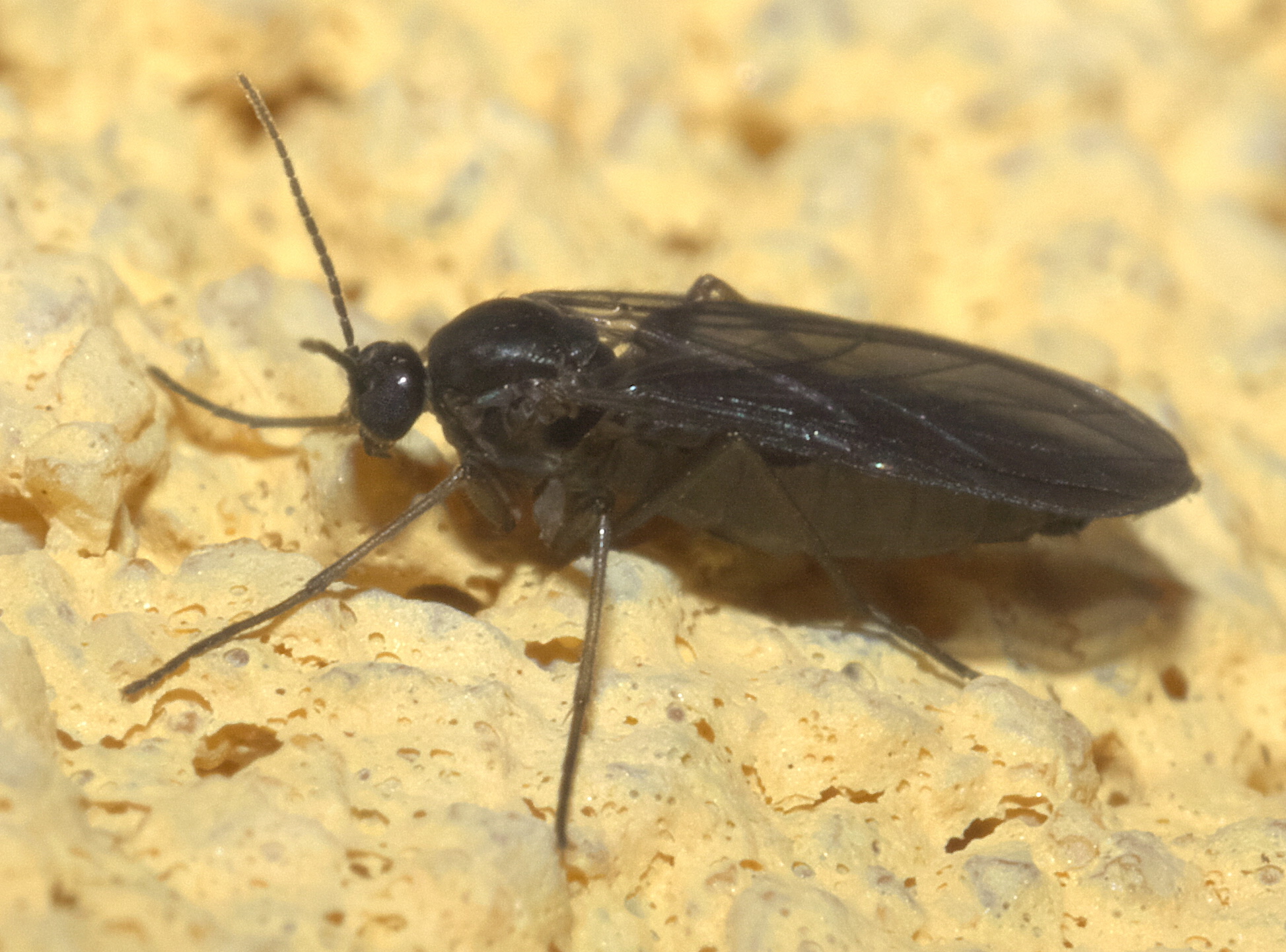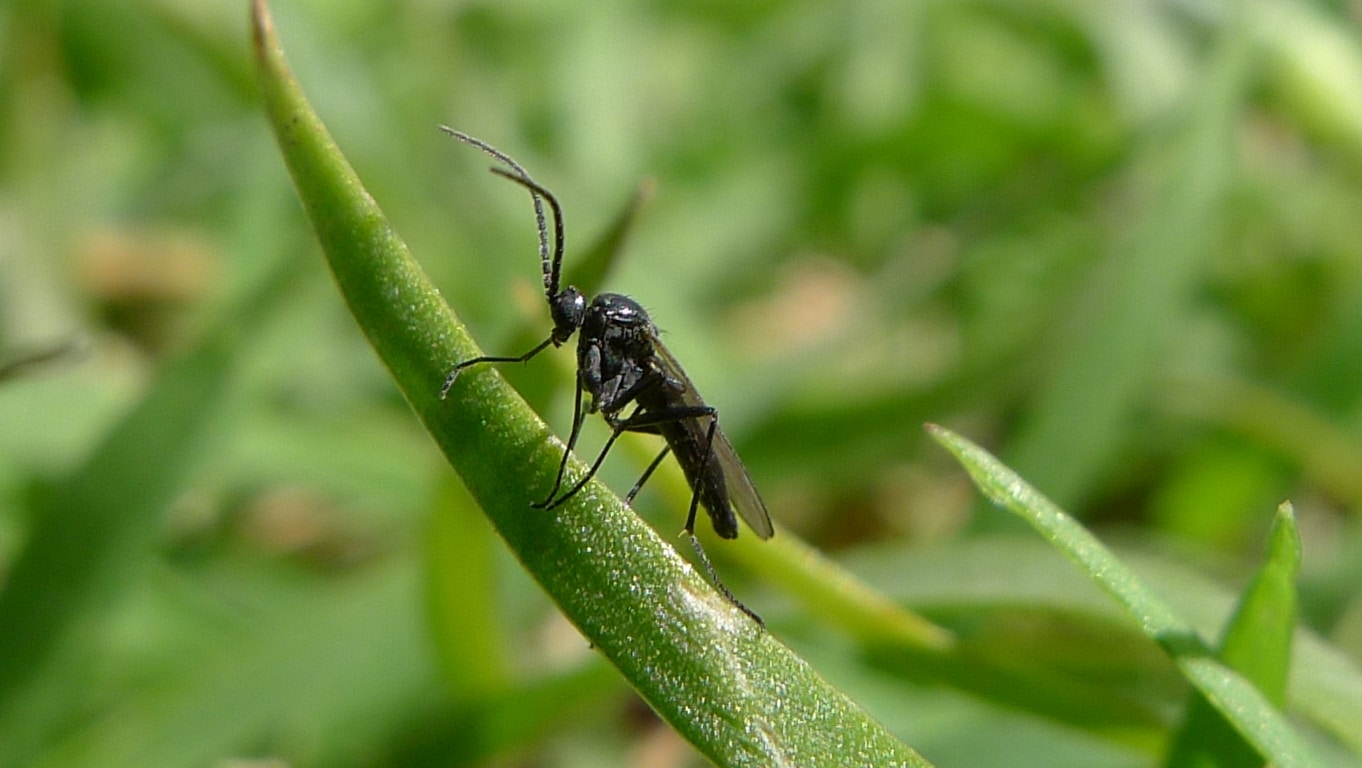
Image - Flickr / Katja Schulz
Plants do everything they can to resist insects that reach the pest dimension, and of course also so that fungi, bacteria and viruses do not get to the inside of their vessels (of which it could be said that they are quite similar to our veins). But sadly, they don't always succeed. In fact, especially in potted crops, it is common for them to have to face the black fly.
This is an insect that, like most of its relatives, multiplies with extraordinary rapidity. And that's not to mention that the larvae reach adulthood in a matter of very little time. But, Why should we protect our beloved plants from it?
Origin and characteristics of the black fly

Image - Wikimedia / Robert Webster
The black fly is the name given to the species belonging to the Sciaridae family, which can be found anywhere in the world, from sea level to more than 4000 meters above sea level. In Europe alone it is estimated that there are more than 600 species. They live in deserts, where they protect themselves from extreme temperatures by digging in the sand, but also in swampy areas and humid environments.
It is a group of small insects, so much so that do not exceed 11 millimeters in length. They have a dark and thin body, with wings the length of their body except for the head. The legs and antennae are long, also dark in color. When in the larval stage they are whitish, thin, as well as semitransparent, and have a black head.
What is its biological cycle?
In order to combat it, it is important to know what phases it passes through:
- Egg: the female lays between 50 to 200 eggs in the humid earth, in spring.
- Larvae: They will go through 4 instars before they reach adulthood, something that will take them about two weeks. It is in this phase when they are most visible, having a whitish body with a black head, and measuring about 5 millimeters. They are also more dangerous for plants, because although at first they feed on decomposing organic matter, when this shortage they will eat the roots.
When they are approaching maturity, they will form a cocoon, and after 4 days the adults will emerge. - Adult: it will live about five days, during which it will feed only on liquids and will procreate.
What are the damages that the black fly of the substrate causes?

Image - Wikimedia / John Tann from Sydney, Australia
As we have seen, its biological cycle lasts very little, but the damage it can cause to plants is significant, especially considering that if the root system is not healthy it is easy for them to spoil. But how can we know that you are having problems caused by the black fly?
Well, if we start from the fact that the larvae can feed on the roots when they lack organic matter in decomposition, the symptoms that we will see in the plants will be:
- Leaf browning / yellowing
- Flower and / or fruit drop
- Flower production (when a plant is in a hurry it can spend its last energy trying to have offspring)
- Growth arrest
How is it treated?
Despite how harmful this pest can be, the truth is that it is not very difficult to control. We know that the humid and shady environment favors you, which is just what you find in the substrate of the pots. Well, with this in mind, here are several tips to keep it at bay:
Don't over water
All plants need water, some more than others. But you have to avoid watering them excessively. One of the most frequent cultivation errors is overwatering, but that in itself is a very serious problem for them, since the roots of most plants -except for aquatic and semi-aquatic- are not prepared to absorb as much water as they can be given in cultivation.
Therefore, it is highly recommended to check the humidity of the substrate before watering again, for example with a thin wooden stick or digging with your fingers. If it is also in a pot without holes, you must move it to another that does have holes, because the water that remains stagnant rots the roots.
Uses new and porous substrates
In order to avoid problems for the plants, it is safest to use substrates that have NOT been used before. Also, the pots must be clean; otherwise, there is a risk of pests or diseases appearing. It must be borne in mind that both insect eggs and fungi, bacteria and viruses tend to go unnoticed, especially these last three that can only be seen through a microscope, but that is precisely why it is so important to take these safety measures.
How should the substrate be?
The substrate, apart from being new, has to facilitate the drainage of the water. That is why if you use mobs, we recommend mixing them with pearlite, claystone or similar. Although if you prefer, you can put a first layer of clay, volcanic clay or similar in the pot.
To prevent black flies, another thing that works is to put a layer of about 3 centimeters of vermiculite (for sale here) on the substrate.
How should the pot be?
The pot can be second-hand (or second-hand 😉), but remember to clean it well before using it with water and dish soap. In addition, it is important that it has holes in its base for the water to come out.
Treat with ecological insecticides
If the pest is installed in our crops, a good way to prevent it from getting worse is by treating them with neem oil (on sale here) or potassium soap (on sale here). Both are insecticides authorized for organic farming, and they are very effective.
Of course, in case the plague is severe, it is preferable to treat with a systemic insecticide.

We hope that these tips will be useful to you to avoid or combat the plague of the black fly of the substrate.